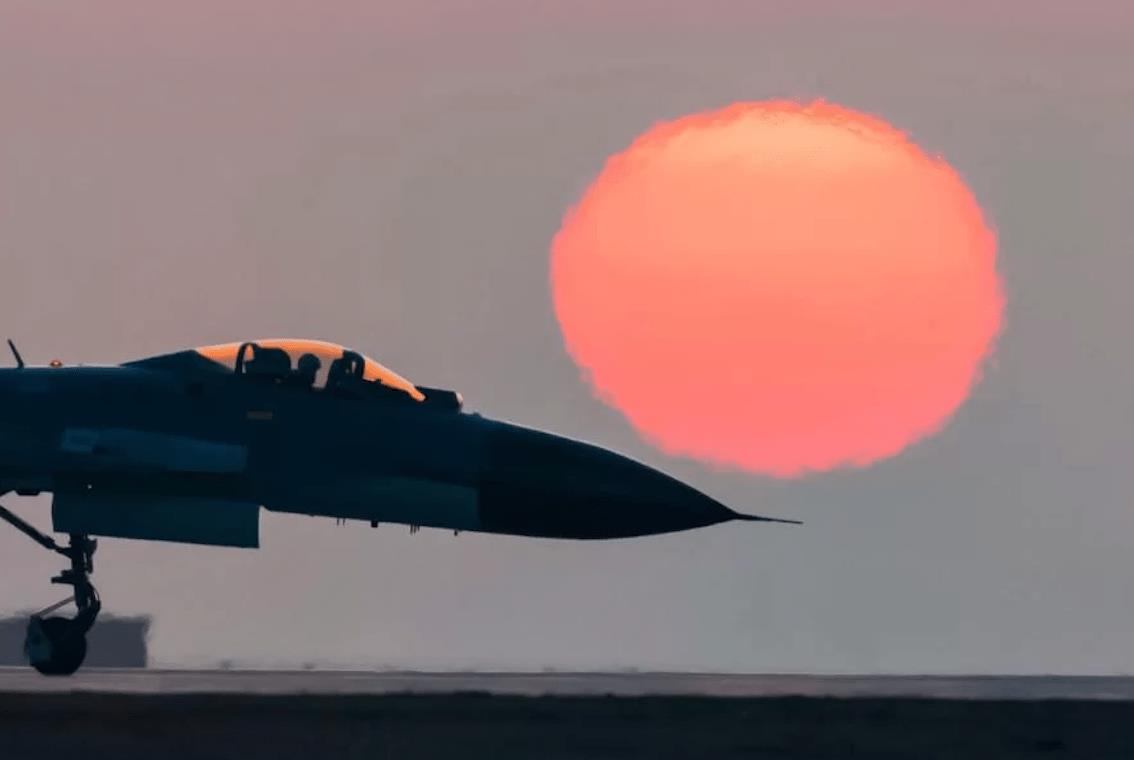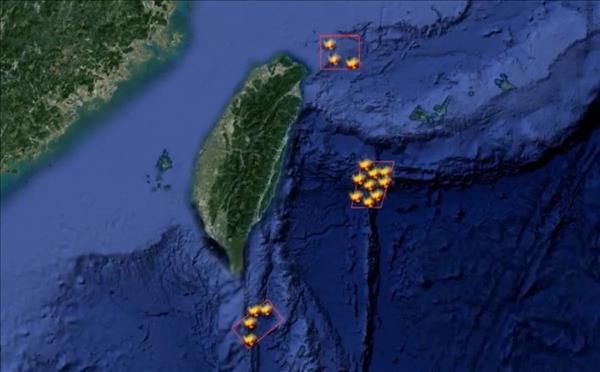
China's Taiwan Strait Drills: The New Normal
The following is the first installment of a translated Guancha.cn article. The views are the author's alone and do not represent the Guancha platform's nor Asia Times' opinion.
The People's Liberation Army (PLA) completed a three-day military exercise in six locations surrounding Taiwan last week after Nancy Pelosi, the speaker of the United States House of Representatives, visited the island. The drills showcased China's military reform.
The PLA's missiles flew across Taiwan but the island's military did not intercept them or alert the Taiwanese people. It's possible that Taiwan's Patriot missile system was unable to intercept them or Taipei did not want to escalate the situation. Taiwan authorities have yet to give an explanation.
Now that the PLA has crossed the midline of the Taiwan Strait and Taiwan's 12-nautical-mile line, its military drills that simulate actual battles have become the new normal. China can now decide whether a future exercise will seamlessly be turned into actual combat.
The epic 2022 military drills in the Taiwan Strait are China's tough response to the provocation of Nancy Pelosi, the speaker of the United States House of Representatives. They are also an effective demonstration of China's determination to achieve reunification.
Much as“a sweet musical echo remains whirling around the house for three days,” the effects of the drills will linger in cross-strait relations, Sino-US relations and the military balance of power. The drills helped ease mainland people's depression and anger.
China is consistent in its words and has no need to follow others' plans when it takes actions. The exercise came later than that of the United States but it has achieved its goal.
Pelosi had said she would visit Taiwan in April but postponed the trip at the last minute when she tested positive for the coronavirus.
In late July, the Financial Times reported that Pelosi planned to“drop by” Taiwan during a visit to Asia-Pacific countries in August, prompting repeated stern warnings from China. In the evening of August 2, Pelosi defied the warnings and visited Taiwan. She left on August 3.
The PLA's joint exercise began on August 4 with some military operations on August 3. The exercise was unusually rapid.
Participating forces, actual deployments and operational details are now classified. It is not known whether they will be announced in the future, but this is undoubtedly a large-scale operation at the theater level and also the largest since the PLA's military reform.
The operation of the Joint Staff Department of the Central Military Commission and the Eastern Theater Command in the exercise has proved the depth, breadth and effectiveness of China's military reform.
It is unlikely that the PLA started working on the exercise plan only when they knew for sure that Pelosi was on her way. The PLA may already have had a full plan in place well before Pelosi's canceled Taiwan trip in April.
It is certain that the Joint Staff Department and Eastern Theater Command had their own plans for the Taiwan Strait. And it is possible that they were just taking one of them out and modifying it for implementation.
On the other hand, the drills could not be completed with only a plan as they required real, not virtual, weaponry and ammunition supply. The fact that the exercise could be pulled off quickly shows that the PLA's readiness for war has reached a very high level.
Such readiness fulfills the requirements of all kinds of military plans and can be put into action within a short time. This is the so-called“cold start.”
It goes without saying that the political goal of this exercise was to create maximum deterrence of the US, Taiwan and other hostile forces. Therefore, the exercise had to be high-profile and powerful and have a clear and reliably deliverable military goal.
Six directions
The six direction. Map: Wikipedsia
The exercise had six directions.
The direction toward Taipei targeted the heart of Taiwan. The one toward Yilan city was aimed at blocking the US and Japanese forces coming from the Ryukyu Islands. The one towards Taiwan's east coast – which has the Chiashan Air Force Base, Suao Military Base and Zhi-Hang Air Base – was aimed at blocking US forces coming from the western Pacific Ocean.
The drill in Bashi Channel was assisting the one near Kaohsiung and was a key zone to intercept the US Air Force coming from Guam.
The direction towards Kaohsiung did not only threaten Kaohsiung, but also squeezed Penghu from the side and backed up the drill in Bashi Channel. No wonder it had the largest exercise area. For quite some time, it has been a key area for the PLA warplanes to enter Taiwan's Air Defense Identification Zone (ADIZ).
Finally, the drill across the strait formed the largest and most direct pressure on the hinterland of Taiwan Island from Hsinchu to Taichung.
The six directions allowed the PLA to choose to land on Taiwan directly or just block Taiwan by sea and air. In wartime, either choice can achieve the goal of reunification by force.
On this basis, various options can evolve. For example, the PLA can weaken the Strait direction and strengthen the Yilan, Pacific and Bashi Channel directions and use the Taipei direction to support the Yilan one.
Or it can strengthen the Penghu direction to achieve the air and sea blockade and occupy Penghu to force Taiwan to surrender.
Or the PLA can enhance the Strait and Kaohsiung directions to make a quick landing on Taiwan while supporting the Yilan, Pacific and Bashi Channel directions with reinforced air power that can quickly get to the island to counter the late intervention of the US air and sea forces.
Peaceful reunification is always preferred but reunification by force should remain an option.
Reunification by force is ideally a quick war but can be a protracted one. All options are valid only when they are realistic options, instead of last resort.
The ability to“cold start” is the key to quick fixes and it is also essential for protracted warfare, though with less direct impact. A protracted war is not the same as a drawn-out war. It still aims for the maximum results in the beginning to create the most favorable conditions for subsequent battles.
The swiftness, practicality and integrity of the exercise have already created a great deterrence for the US, Taiwan and other hostile forces.

A Chinese J-10 fighter jet in formation before takeoff in a file photo. Photo: eng.chinamil.com.cn No problem if Taiwanese undeterred
Of course, some people may say that Taiwan's public sentiment does not seem to be deterred. It seems that their“horse races and parties continue normally.”
The PLA's drills are never meant to deter the Taiwanese people, but the forces of“Taiwan independence” and their supporting powers outside the island.
In fact, if everyone is numb, that's good. Turning such an exercise into an actual battle is as easy as piercing a piece of paper.
From now on, PLA's drills near Taiwan have become a new normal. Whenever similar provocations against China happen, the PLA will do these again. It is up to China to decide which exercise will seamlessly be turned into actual combat.
It is not up to the players to decide whether the ball is wiped out or out of bounds, but up to the referee. China is the referee on the issue of whether“Taiwan independence” and foreign forces have crossed its red line. When the Taiwanese army loses its preparedness one day, reunification will be achieved.
It is easier said than done if Taiwan wants to look calm and relaxed while staying alert internally.
Taiwan needs to have a strong political leadership, a well-trained military and a united population in order to swiftly transform itself from a state of lack of preparedness to a wartime state. Taiwan needs to have sufficient psychological, material and strategic preparations for the battles. But it simply cannot achieve that.
Chen Feng is editor of Guancha.cn, which originally published this article in Chinese as an exclusive manuscript. It is republished in English translation here with kind permission.
This article is purely the author's personal opinion and does not represent the Guancha platform's nor Asia Times' opinion. It may not be reprinted without authorization.

Legal Disclaimer:
MENAFN provides the information “as is” without warranty of any kind. We do not accept any responsibility or liability for the accuracy, content, images, videos, licenses, completeness, legality, or reliability of the information contained in this article. If you have any complaints or copyright issues related to this article, kindly contact the provider above.
















Comments
No comment